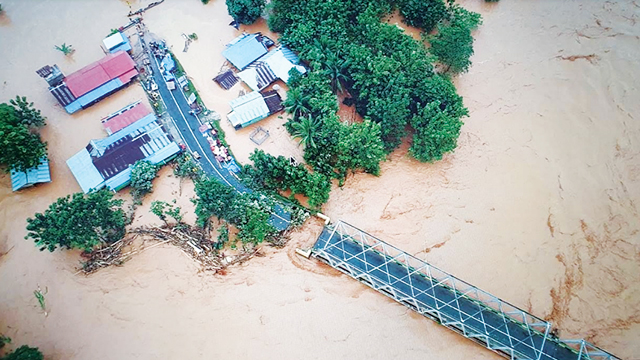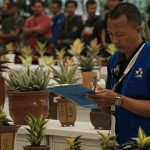Jakarta (Greeners) – Amid torrential rain caused by atmosphere activity, Madden Julian Oscillation, had resulted to floods in Sulawesi, early this month, said Indonesia’s climate agency, or BMKG.
Kadarsah, chief of climate change unit at BMKG, said that the Oscillation activities have significant potential to form rain clouds in central and eastern parts of Indonesia, which is predicted to occur for the next five days, June 11-15.
The oscillation is produced by massive scale circulation in the equator, moving from Indian Ocean to the east, to Central Pacific.
READ ALSO : World Environment Day 2019 Marks The Campaign To Curb Global Air Pollution
Furthermore, the movement of the clouds to the east is being associated with Madden Julian Oscillation. The Zonal wind anomaly and potential speed in the upper troposphere which often spreads to do its around-the-Earth cycle.
“The process is marked with the changes of pressures in the surface and the Atmospheric Relative Angular Momentum. The Madden Julian Oscillation is an intraseasonal variety (less than a year) famous to tropical areas,” he said to Greeners on Tuesday (11/6) via telephone.
Floods Hit Sulawesi
Up to Monday (10/6), the Disaster Mitigation National Agency of BNPB recorded 4,815 families or thousands of people affected by floods, — 2,900 families in South Sulawesi, 1,091 families in Southeast Sulawesi, and 824 families in Central Sulawesi –. In addition, floods also causing damages on houses, agriculture, fisheries, and public facilities.
Sutopo Purwo Nugroho, chief of BNPB Data Center, Information and Public Relation, said that based on latest development on June 9, floods in North Konawe district of Southeast Sulawesi, have left 1,091 families or 4,198 people from six subdistricts, — Andowia, Asera, Oheo, Landawe, Langgikima, and Wiwirano –, to seek refuge.
“Asera is the subdistrict with the largest affected villages, 13 villages,” said Nugroho in a press release. “Floods also washed away 72 houses and inundated thousands. North Konawe Disaster Mitigation Agency is still doing inventory in the field. Meanwhile, damages on agriculture includes 970.3 hectares of paddy fields, 83.5 hectares of corn plantation, and 11 hectares for other crops. On fisheries, floods affected 420 hectares of fish farms.”
READ ALSO : Ministry of Environment and Forestry Sealed More Illegal Landfills
In addition, floods also ruined public facilities, such as bridges, roads, house of worship, and health facilities. Local disaster management agency reported that the bridge connecting Laronanga village to Puwonua village was washed away by floods, other bridge in Padalerutama village was inundated, and the bridge connecting Tanggulari village to Tapuwatu village and bridge connecting between provinces in Asera collapsed. Other damages, three mosques, two health centers, and two unit sub-health centers.
For South Sulawesi, floods affected 1,452 families, — 1,002 families in Tanru Tedong and 450 families in Salobukkang village –, 200 houses inundate, 3,676 hectares of paddy fields in 15 villages damaged, schools, dams, roads and bridges, said Nugroho.
“Other floods in Central Sulawesi, Morowali Disaster Management Agency had implemented emergency respond. Floods [in the region] affected 561 families, — 263 families in Lele village and 298 families in Dampala — are in refuge. After floods, material damages include 7 unit houses, 45 unit houses inundated, and one bridge collapsed,” he said.
North Konawe administration announces emergency situation, starting on June 2 to June 16, by implementing efforts, such as establishing command post for floods in bupati’s house, evacuate and rescue, treating affected people, collecting data and activate communication network for emergency situation.
Reports by Dewi Purningsih



















































